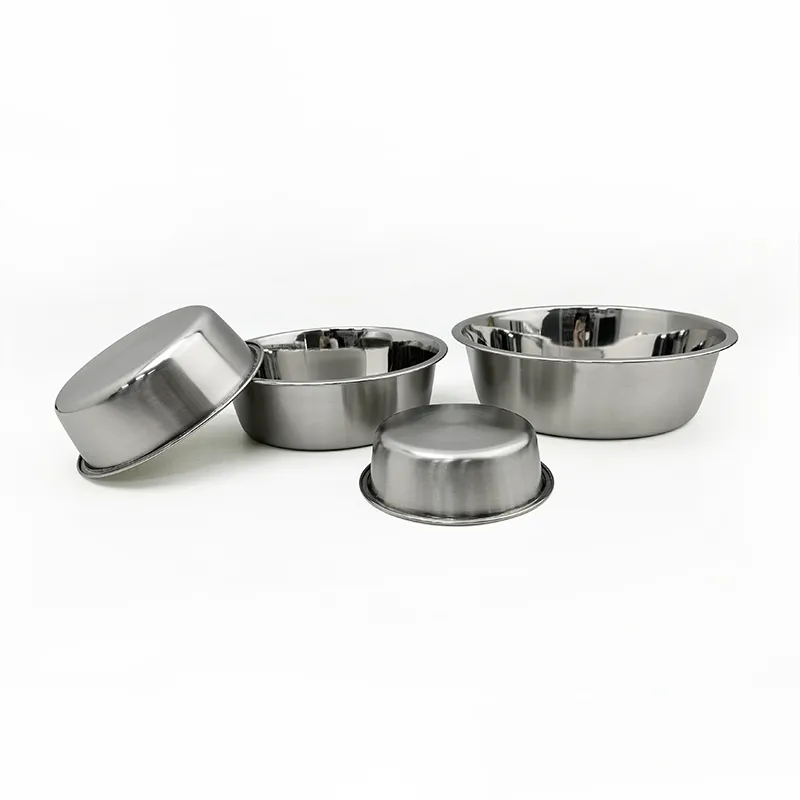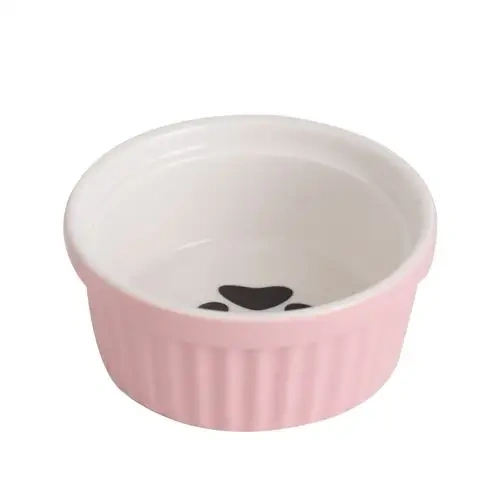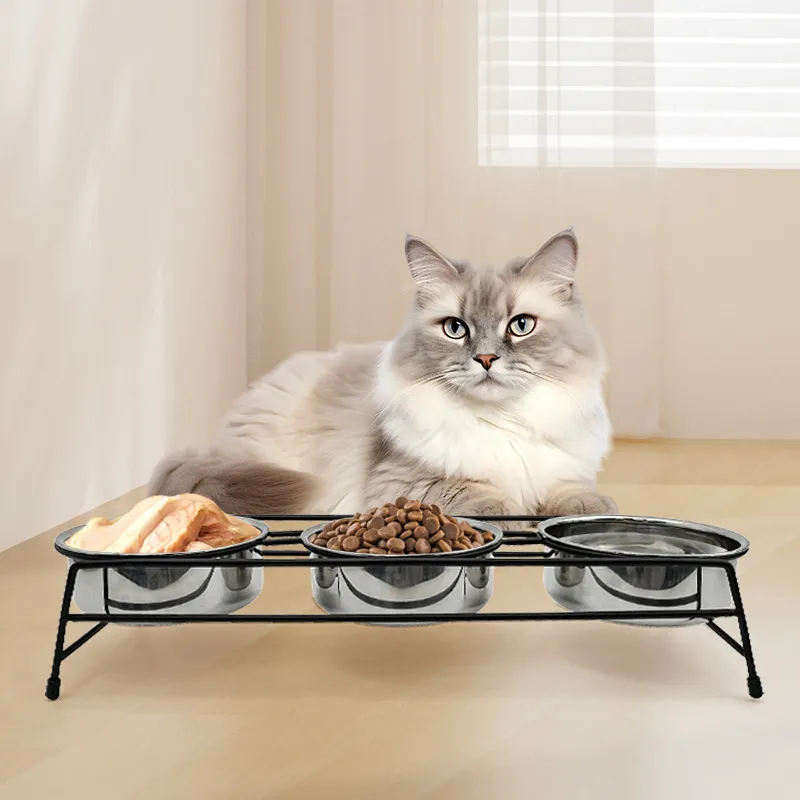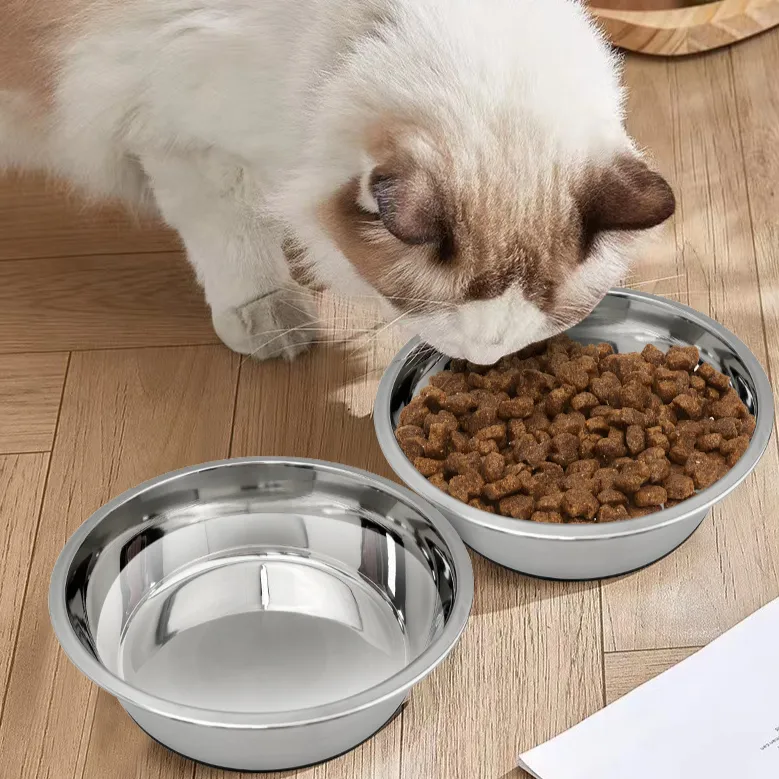
Der Katzenbesitzer fragt sich vielleicht, wie er die Mahlzeiten für sein Tier sicher und gesund gestalten kann. Neben anderen Fragen, kann man fragen: Beeinträchtigen Katzennäpfe die Gesundheit??
Die Wahl des richtigen Katzennapfes für Ihre Katze hat nicht nur mit Ästhetik und Komfort zu tun, sondern auch mit der täglichen Gesundheit. Auf dem Markt gibt es drei gängige Katzennäpfe: rostfreier Stahl, Kunststoffund KeramikJede hat ihre Vor- und Nachteile. Aber welche ist es wert, gewählt zu werden?
Heute werden wir alles über die die Vor- und Nachteile dieser drei Materialien mit Ihnen, damit Sie wählen Sie die sicherste und hygienischste Futternapf für Ihren Katzenfreund.
Katzennäpfe aus Edelstahl: erste Wahl für Langlebigkeit und Sicherheit

Vorteile:
Hygienisch: Edelstahl ist porenfrei, d. h. Lebensmittelpartikel, Bakterien und Gerüche können nicht in seine Struktur eindringen; daher ist er sauber und hygienisch. Durch einfaches Abwaschen mit warmem Seifenwasser sieht er wieder wie neu aus.
Dauerhaftigkeit: Die Näpfe sind sehr robust, daher resistent gegen Risse und Splitter und langlebiger als Plastik- oder Keramiknäpfe. Die Katze würde den Napf nicht zerkratzen oder an ihm kauen; daher ist dieser Napf eine sichere Langzeitinvestition.
Ungiftig: Im Gegensatz zu Plastiknäpfen enthält Edelstahl keine schädlichen Chemikalien wie BPA, die in das Futter oder Wasser Ihrer Katze übergehen, so dass Ihr Haustier immer vor Giftstoffen geschützt ist.
Stabilität: Die meisten Edelstahlnäpfe haben einen rutschfesten Boden, der den Napf an Ort und Stelle hält und ihn nicht wegrutschen lässt, während Ihre Katze ihr Essen zu sich nimmt. Dies reduziert die Tendenz Ihrer Katze, ihr Futter zu verstreuen.
TemperaturkontrolleIm Vergleich zu einem Plastik- oder Keramiknapf hält ein Edelstahlnapf Futter und Wasser länger warm; dies ist hilfreich, damit die Mahlzeit Ihrer Katze frisch und kühl bleibt.
Benachteiligungen:
LärmEdelstahlnäpfe können während des Fressens Ihrer Katze laut sein, und das Metall kann Geräusche verursachen, wenn es mit den Zähnen getroffen wird. Die meisten Katzen gewöhnen sich jedoch schnell an den Lärm.
PreisEdelstahlschüsseln: Edelstahlschüsseln sind im Vergleich zu Kunststoff- oder Keramikschüsseln etwas teurer, aber ihre Robustheit und Qualität sind diese Investition auf lange Sicht absolut wert.
Katzennäpfe aus Plastik: praktisch, aber ein Risiko

Vorteile:
Erschwinglich: Kunststoffschüsseln sind im Vergleich zu allen anderen Materialien immer günstiger. Wenn Sie ein knappes Budget haben, ist Kunststoff vielleicht die beste Wahl für Sie.
Leichtgewicht: Kunststoffschüsseln sind so leicht und einfach zu tragen und zu manövrieren, dass sie sich auch für Reisen und Umgebungen mit wenig Platz eignen.
Benachteiligungen:
Kratzer und Bakterienvermehrung: Der Nachteil von Plastikschüsseln ist, dass sie sehr leicht zerkratzen, und solche Kratzer sind ein guter Nährboden für Bakterien. Diese Kratzer sind sehr mühsam zu reinigen. Mit der Zeit kann Kunststoff porös werden und Lebensmittelgerüche aufnehmen.
Gesundheitliche Risiken: Die meisten Plastiknäpfe enthalten giftige Chemikalien, darunter BPA und Phthalate. Diese Stoffe sickern in das Futter oder Wasser Ihrer Katze und verursachen Gesundheitsrisiken wie hormonelles Ungleichgewicht und andere Verdauungsprobleme.
Flecken und GerücheKunststoffschüsseln färben leicht ab und nehmen möglicherweise den Geruch von Lebensmitteln auf, so dass sie bei längerem Gebrauch nicht hygienisch sind.
Katzennäpfe aus Keramik: gut aussehend, aber zerbrechlich Vorteile

Vorteile:
Attraktives Erscheinungsbild: Katzennäpfe aus Keramik sind stilvoll und meist in verschiedenen Farben und Designs erhältlich. Wenn Sie Wert auf das Aussehen des Essbereichs Ihres Haustieres legen, dann ist ein Keramiknapf zweifelsohne eine elegante Lösung.
StabilIm Vergleich zu Kunststoff- und Edelstahlnäpfen ist ein Keramiknapf viel schwerer, so dass Ihre Katze ihn nicht umkippen kann. Das macht sie für die Fütterung sehr stabil.
Benachteiligungen:
Fragil: Der größte Nachteil von Keramiknäpfen ist, dass sie leicht zerspringen oder brechen können, und wenn sie herunterfallen, gehen sie mit Sicherheit zu Bruch. Sie sind gefährlich für Ihre Katze und für Sie. Die Kanten der zerbrochenen Keramiknäpfe können scharf sein.
Porös: Genau wie Kunststoff können einige Keramikschüsseln porös sein, d. h. sie nehmen Essensreste, Bakterien oder Gerüche auf, die ihre Reinigung erschweren.
Preis: Keramikschüsseln sind in der Tat teurer als andere Schüsseln. Sie sind zwar attraktiv, halten aber aufgrund ihrer Zerbrechlichkeit nicht annähernd so lange wie Schalen aus Edelstahl.
Welches Napfmaterial ist für Katzen am besten geeignet?
Sowohl Kunststoff als auch Keramik haben ihre jeweiligen Vor- und Nachteile in Bezug auf Haltbarkeit, Sicherheit und Hygiene, rostfreier Stahl ist zweifellos die beste Option unter den drei. Er punktet durch Haltbarkeit, Hygiene und Sauberkeit. Edelstahl ist ein recycelbares Material und daher umweltfreundlich.
Bei PebuudtyWir haben uns auf qualitativ hochwertige Katzennäpfe aus rostfreiem Stahl der Serie 18/8 304 spezialisiert, die ungiftig und spülmaschinenfest sind und sich durch Sicherheit, Komfort und Stil auszeichnen. Egal, ob Sie einen einfachen Napf oder ein individuelles Design benötigen, wir bieten die größte Auswahl an Katzennäpfen in verschiedenen Größen.



Über uns
Einleitung: Pebuudty ist ein professionelles Produktionsunternehmen, das sich auf die Herstellung von Haustiergeschirr aus Edelstahl spezialisiert hat. Unsere moderne Ausrüstung und vollautomatischen Produktionslinien können die unterschiedlichsten Anforderungen erfüllen. Wir befolgen streng die ISO9001 Standard. Unsere Produkte erhalten FDA und ROHS. Wir haben mehrere Patente erhalten und exportieren hauptsächlich nach Europa, Amerika, Südostasien und so weiter. Wir bieten umfassende Zertifizierung und ServiceWir heißen unsere Kunden in aller Welt willkommen, um mit ihnen zusammenzuarbeiten und eine bessere Zukunft zu schaffen.
